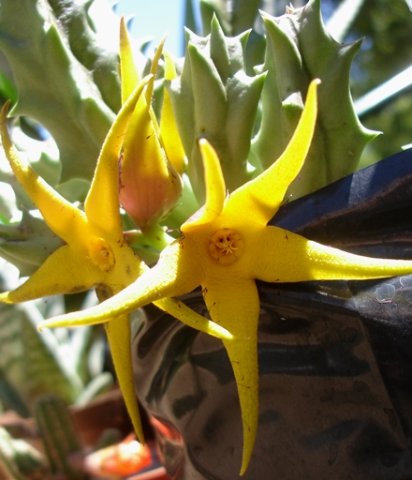Orbea lutea subsp. lutea flowers

Author: Ivan Lätti
Photographer: Judd Kirkel Welwitch
The long, yellow, tapering corolla lobes of Orbea lutea subsp. lutea flowers mostly curve out slightly as they spread around the flower centre.
The small, round body visible in the centre comprises the outer and inner coronas. This is the part vital for plant propagation, and also the pollinator visiting centre. Mostly flies respond to the foul odour that tells them there’s food here.
The bisexual flowers yield both pollen, important as the flower’s male component for fruit production, and nectar that is a byproduct of flowering solely produced for enticing and rewarding pollinators (Smith, et al, 2017; Leistner, (Ed.), 2000; White and Sloane, 1937; iNaturalist).

